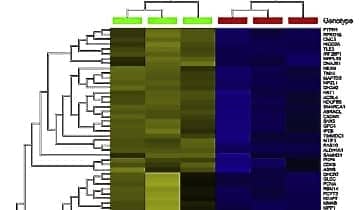This is a companion article to the feature “Automating Quality Control.”
By John C. Yundt-Pacheco
One of the maxims of laboratory management is the ever-pressing need to do more with less, and to cope with an ever-shrinking budget. And let’s not forget the other constant of striving to increase the quality of the clinical diagnostic services provided. Here are three key suggestions for reducing expenditures while simultaneously increasing quality.
QC Design
QC design is the process of customizing quality control practices for each analyte. Just as the human body contains differing amounts of analytes with clinical interest, so too are there a wide variety of different quality specifications for those analytes. Analytes such as sodium are tightly regulated, while analytes such as iron are not. So a quality specification for sodium might be approximately 1%, with a corresponding 20% to 30% for iron.
A lab that uses the same QC strategy for sodium and iron, will be either over-controlling iron, or under-controlling sodium. With QC design, the lab can apply different QC strategies for sodium and iron, with tighter rules or higher QC frequency for sodium, and looser rules or lower QC frequency for iron.
QC design also allows the lab to optimize its quality control resources against the quality specifications or clinical utility of its test menu. The end result is less over-controlling (resulting in savings from a reduction of false rejections) and less under-controlling (resulting in an increase of quality).
QC Lot Sequestration
QC lot sequestration is the practice of working with a QC vendor to reserve enough QC material so the lab will have a supply that will last until the material expires. Prolonging the use of a given lot number allows the lab to maximize the value of its statistical history while reducing the frequency of crossover studies.
Unfortunately, what frequently happens is that a lab’s purchasing department will only issue a 12-month purchase order. If a lab is purchasing a QC material with a 36-month shelf life, a single purchase order will not work. Without making arrangements for lot sequestration, the same lot number of material may not be available when it is time to reorder. Even if it is available, the purchasing agent may try to acquire the lot number with the longest available expiration date—forcing the lab to switch lot numbers prematurely.
Labs can save time and money by entering into a lot sequestration agreement with its QC vendor to ensure that it won’t have to change lot numbers more frequently than necessary.
The 10-Day Crossover Study
Whenever QC material lot numbers are changed, a statistical ‘crossover study’ of the new material must be conducted to determine its statistical behavior.
Traditionally, statistical studies of this nature tend to be 20-day studies where the QC materials are evaluated repeatedly over that 20-day period. Crossover studies are conducted to estimate the mean (target), and standard deviation (range) of the material. Unfortunately, a 20-day study is generally insufficient to characterize the standard deviation (SD) with high confidence and can lead to overkill for computing the mean.
An alternative approach is to use an abbreviated study for 10 days with a focus on estimating the mean of the new material. Once the mean has been computed from 10 evaluations, the lab can use the coefficient (CV) from the old material that is closest to the mean to estimate the standard deviation of the new material.
CV = 100* SD/Mean, so SD = Mean*CV / 100.
Variation is generally thought to be a characteristic of the test method, unrelated to the lot number of the QC material, except that it has a dependency on concentration. Therefore, the lab can use the CV from the old lot number to estimate the SD of the new lot number.
When the lab has 60 or more evaluations of the new material, they can be used to update the initial estimate of the new lot number SD. This approach will cut the cost of changing QC lot numbers in half.
If applied regularly, the three suggested practices of utilizing QC design, using QC lot sequestration, and engaging in 10-day crossover studies—each easily incorporated into lab protocols—can lead to statistically significant increases in quality while simultaneously benefiting the bottom line.
John C. Yundt-Pacheco is a scientific fellow in the quality systems division at Bio-Rad Laboratories.





